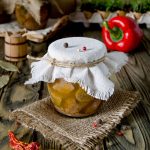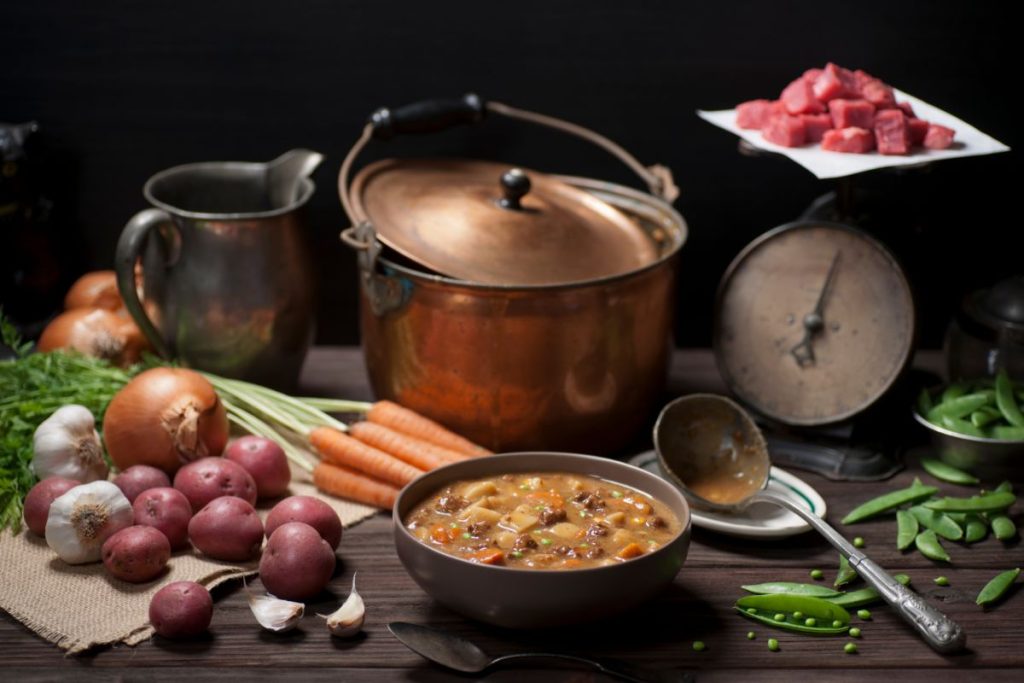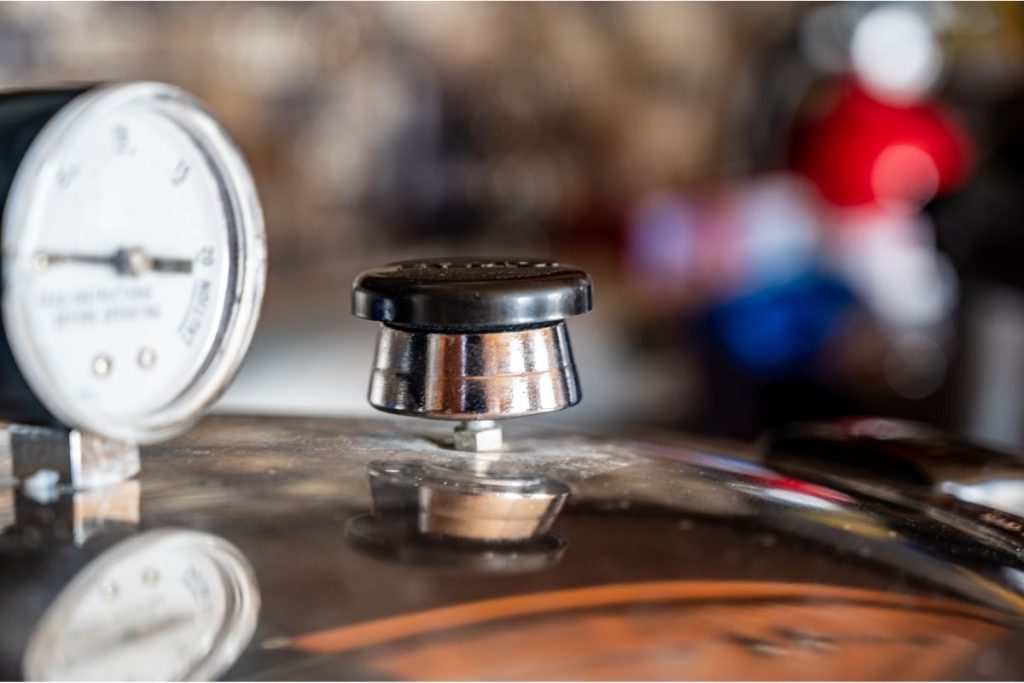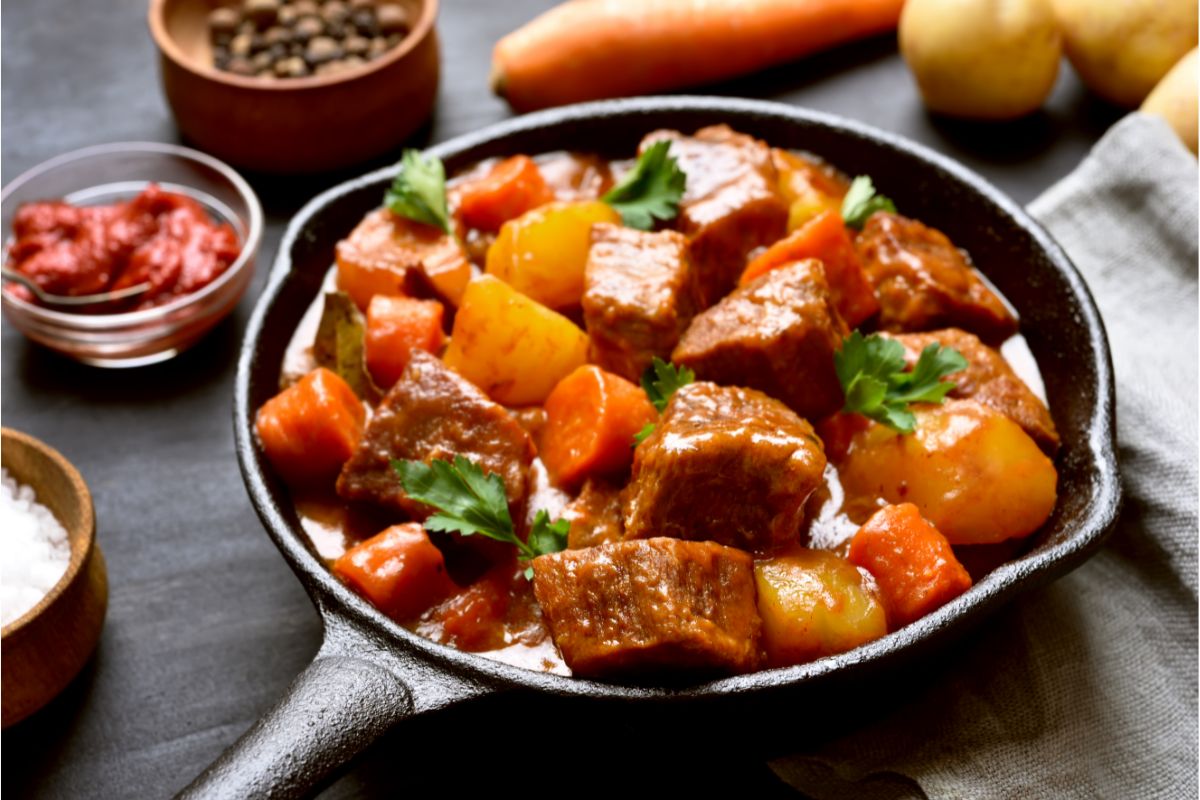When home canning beef stew, a pressure canner is required. Beef stew contains various vegetables and beef, which are low-acid ingredients that require a high processing temperature of 240-250°F for 75 minutes at a pressure determined by altitude.
What is the Best Method for Canning Beef Stew?
Pressure canning is the best method for canning beef stew due to its ability to process low-acid foods safely. Pressure canning utilizes high temperatures and pressure to kill harmful bacteria, ensuring food safety and extending shelf life. This method effectively seals the jars, creating a vacuum that prevents spoilage and maintains the quality of the stew over time.
Print
Savory Beef Stew Canning Recipe
- Total Time: 2 hours, 30 minutes
- Yield: 7 Quarts 1x
Description
This pressure-canning recipe carefully balances the flavors of tender beef, aromatic veggies, and savory spices, resulting in a rich and satisfying stew. The step-by-step instructions ensure proper processing and sealing, guaranteeing long shelf life without compromising taste or safety.
Ingredients
- 4 to 5 lb beef stew meat, cut into 1½-inch cubes
- 1 tbsp olive oil or vegetable oil
- 12 cups peeled and cubed potatoes
- 8 cups carrots, sliced
- 3 cups chopped celery
- 3 cups chopped onion
- 1 tbsp salt
- 1 tsp thyme
- ½ tsp black pepper
- Water
Instructions
- Heat the canning jars in simmering water to prepare for pressure canning.
- Meanwhile, wash the lids with warm soapy water and set the bands aside.
- Pour oil into a large saucepot and brown the meat before adding the vegetables and seasoning. Cover the ingredients with boiling water and bring to a boil. Turn off the heat.
- Ladle the stew into the hot jars, leaving 1-inch headspace.
- Remove any air bubbles with a soft kitchen implement like a spatula.
- Wipe the rim, place the hot lid on the jar, and adjust the band until fingertip tight.
- Process your filled jars in a pressure canner adjusting for altitude as follows:
Dial Gauge Pressure Canner
- 0 – 2,000ft: 11 lbs
- 2,001-4,000ft: 12 lbs
- 4,001-6,000ft: 13 lbs
- 6,001-8,000ft: 14 lbs
Weighted Gauge Pressure Canner
- 0 – 1,000ft: 10 lbs
- 1,001ft and up: 15 lbs
Post Processing
- Process pints for 75 minutes and quarts for 90 minutes.
- After processing, turn off the heat, and allow the canner to cool to zero pressure. Let it stand for 5 minutes before removing the lid.
- After cooling in the canner for 10 minutes, remove the jars and let them cool down.
- Test the lids after 24 hours, ensuring they do not flex up and down when pressed in the center and store all sealed jars in a cool, dry place.
- Prep Time: 1 hour
- Cook Time: 90 minutes
Nutrition
- Serving Size: 500g
- Calories: 535kcal
- Sugar: 8.9g
- Sodium: 330mg
- Fat: 16g
- Saturated Fat: 7.4g
- Carbohydrates: 41g
- Fiber: 6.7g
- Protein: 58g
- Cholesterol: 172mg
Can Beef Stew Be Canned In A Water Bath?
Beef stew cannot be safely canned in a water bath. Water bath canning is suitable for high-acid foods, while beef stew is a low-acid food.
Low-acid foods require higher temperatures achieved through pressure canning to kill bacteria effectively and prevent spoilage. Therefore, pressure canning is recommended for canning beef stew or ground beef to ensure food safety.
Is It Better To Hot Pack Or Raw Pack Beef Stew?
When canning beef stew, it is better to use the hot pack method. In the hot pack method, the ingredients are pre-cooked before being packed into the jars and processed. This approach offers several advantages:
- Pre-cooking the ingredients allows for better heat penetration during the canning process and reduces the cooking time required when reheating the stew.
- It softens the vegetables and meat, allowing them to retain their texture and flavor during the canning process. Raw packing can result in overcooked and mushy vegetables in the finished stew.
- Lastly, hot packing removes excess air from the jars, resulting in better vacuum sealing and longer shelf life.
What Seasonings Work Best In Canned Beef Stew?
When it comes to seasoning beef stew, the canning process itself brings out the best flavors of the ingredients you add. Here are some of the best seasonings to use when canning beef stew:
- Salt and pepper are essential for basic seasoning and enhance the overall taste of the stew. Use them to season the beef and adjust the flavor to your preference.
- Garlic and onion add depth and savory notes to the stew. Use fresh minced garlic or onion powder to infuse the stew with their flavors.
- Herbs like thyme, rosemary, and bay leaves complement the beef and vegetables in the stew. Add sprigs of fresh herbs or dried to infuse the stew with its aromatic qualities. Remember to remove bay leaves before serving.
- Worcestershire sauce is a tangy, savory sauce that adds richness and depth of flavor to the stew. Add a splash during cooking to enhance the overall taste.
- Tomato paste brings a hint of sweetness and acidity, balancing the flavors in the stew.
- You can enhance the meat flavor by adding a bouillon cube or using beef broth or beef stock.

What Kind Of Beef Should Be Used In Canned Beef Stew?
When selecting beef for canned beef stew, it is recommended to use cuts that are suitable for slow cooking. Tougher cuts such as chuck, round, or stewing beef are ideal.
These cuts have more connective tissue, which breaks down during cooking, resulting in tender and flavorful meat. The slow cooking involved in canning allows the tougher cuts to become tender and succulent while infusing their rich flavors into the stew.
What Equipment Or Supplies Are Needed for Batches of Beef Stew?
With the help of a decent-size pressure canner, you can preserve your stew in batches, ensuring it lasts throughout the year. Presto or All-American pressure canners offer precise control to achieve optimal canning results. Consider purchasing a canning kit that contains a pressure canner and all the supplies you need for convenience.
Some canning books, such as the Ball Blue Book or the Complete Book of Home Preserving, offer instructions to help you make batches of canned goods and can help guide your food preservation endeavors.

How Long Can Canned Beef Stew Be Stored?
When canned and stored properly, beef stew has a shelf life of approximately 1 to 2 years. The exact duration depends on the specific recipe, canning technique, storage conditions, and the quality of the ingredients.
It’s important to check the seals of the jars regularly to ensure they are intact and show no signs of spoilage, such as bulging lids or unusual odors. Additionally, it’s recommended to follow tested canning recipes and guidelines to maximize the shelf life and ensure food safety.

